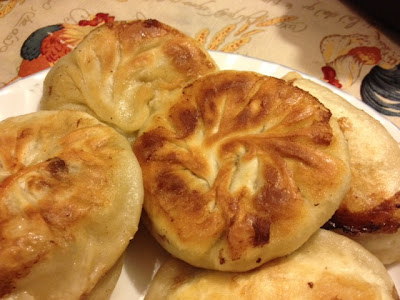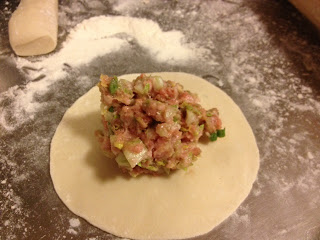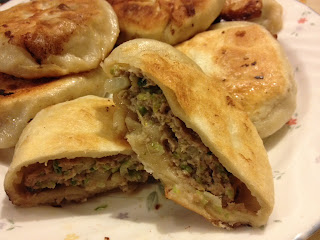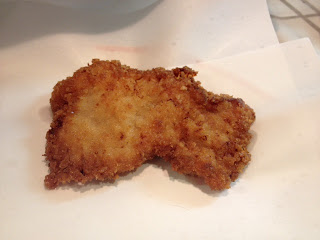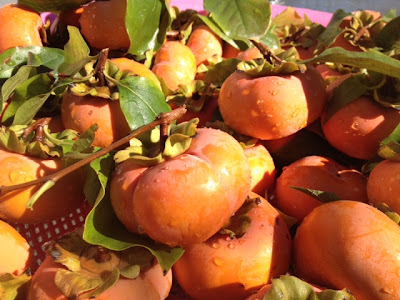Sunday's best highlights was cooking with my mother. My mother's favorites are 'noodle' food or the 'bread' food. She was busy studying some recipes by Carol. We picked a couple of recipes - Shi'er Bien and Green Onion Pancake. It was a fun day.
Makes 8
Ingredients for Filling:
400 g ground pork
400 g chopped NAPA Vegetable, squeezed to strain excess water
5 - 6 Chopped Green Onions
1/4+ C Chopped Ginger
Soy sauce 1 TBsp
Sesame oil 2 TBsp
Salt 1 tsp
White pepper
Stock 50 cc
300 g Flour
100 cc hot water
90 cc cold water
Salt 1/8 tsp
Cover the dough and rest for 30 min.
Take one rope and slice into 2 to 2-1/ 2 inches each.
Roll out the dough. Thinner on outer edge then the center.
Pinch close the dough - very well to keep the gravy from escaping.
Place pinched side down on a floured surface and press down gently with your palm to flatten a bit.
Heat a large skillet with 3 TBsp of cooking oil.
Place the Shi'er Bien with pinched side down in the skillet when the oil started to shimmer.
Turn to high heat.
Put 1 cup of water and cover with lid.
Cook until almost all liquid is evaporated. Turn heat to medium low.
Remove the lid and cook for 2 minutes. Rotating the skillet's position over the burner to assure even browning of all Shi'er Bien. Turn them over to brown the smooth side.
Ready to serve when they are beautifully browned.
